Ways to Grow a Tree
Puddock Hill Journal #21: Some notes on the importance of trees in the landscape.
We returned from vacation to a dry spell. This meant worrying about the viability of all our plantings but especially the newer ones and especially the youngest trees.
We are fortunate at Puddock Hill to have a legacy of beautiful old trees. Someone planted this Cutleaf Japanese maple a long time ago, and it has grown to about ten feet high with a ten-foot spread:
The arborist tells me it is the oldest one he’s seen in the area at a private home, so we are lucky that a previous owner loved trees.
Nearby, across from our front door, grows what I call the realtor tree, because it sold us the house:
It’s a Sycamore, of course, or perhaps more likely a Sycamore-London Plane cross. The old trees really did help close the sale, as one can always renovate an old house or build a new one, but no amount of money will plant a 100-year-old tree.
This native Red oak on the west side of the house has likely been alive for at least a century and a half:
There are other interesting old trees about, including a very large Concolor fir (native to western North America), a Cunninghamia lanceolata (native to China), a Spanish fir (native to southern Spain and northern Morocco), several Atlas cedars (also native to Morocco), and a Dawn redwood (native to China), among others.
Of course, our interest here has turned more toward natives, but we have no intention of removing these grand old exotics.
In addition to the Red oak and Sycamore noted above, older native trees on the property include White oak, Bur oak, Pin oak, Sweet gum, White pine, Black walnut, Green ash, Hemlock, Flowering dogwood, Sweet bay magnolia, Umbrella magnolia, Bald cypress, and Red maple, among others. Here is a 60-foot Pin oak growing alongside the driveway:
Trees this big and old provide inspiration. They remind backyard stewards that we are planting for posterity.
Most of the old trees I mentioned were originally planted as specimen trees. A specimen tree generally sits in a prominent position in the garden or landscape with little competition from anything growing nearby. They tend to grow lusher and broader than trees in the wild, most of which populate woods and forests.
We have planted a few specimen trees over the years ourselves, most notably a Copper beech (native to Europe) and a couple of native Willow oaks that we positioned to block our view of neighboring houses. There is no harm in doing so except for the missed opportunity to plant a native that would help restore the local ecosystem.
Most of our tree planting today takes place along the edges of the property. We planted 400 trees over the past three years, guided by the following principles:
Plant natives. Native trees support essential native wildlife.
Plant in fall when trees are dormant. Dormant trees are less prone to transplant shock, winter soils are wetter, and the trees “wake up” at the right time in their new home.
Arrange trees as nature might. Where we’re establishing or promoting woods, we try never to plant trees in a perfect line, not to space them too evenly in relation to one another, and to plant them closer together than one would place specimens.
Plant at least some young trees near mature trees of the same type. Most tree seeds fall nearby, so this replicates nature’s odds.
Do not fertilize. These are wild trees. The sooner they learn to fend for themselves the better.
Consider climate change. Planting for longevity means taking into account future conditions. As the climate warms, trees at the southern end of their range likely will not survive. Trees at the northern end of their range might be worth trying in order to promote diversity and resilience.
Some of the trees we planted were as tall as five feet when they arrived. Many others were saplings, mere sprigs with only a few tiny buds. While a higher percentage of the saplings have died (maybe a third), those that survived are adjusting well. Among the larger trees, the best performers so far have been those planted in wet areas, such as Sycamores, Bald cypress, and Atlantic white cedar.
Those young trees getting the most sun of course have the best chance to thrive, but it is also important to remember that trees in the woods have different growing habits than specimens. They tend to grow straighter and develop fewer lateral limbs as they stretch for the light, which is a limiting factor. This Tuliptree, just two years old, has grown to six feet with a lush habit in close to full sun:
This maple, by contrast, is a slower grower than the Tuliptree but also has been placed in a shadier spot:
Consider that these trees are both exactly the same age! Eventually, however, they will both serve the purpose of reestablishing healthy woods on the Puddock Hill perimeter.
Planting trees requires patience, but they constitute the most important part of the landscape. Benefits include:
Visual structure. Trees create all-year interest and frame the landscape.
Screening. Well-placed trees and woods can protect from nearby eyesores and make the landscape look more natural.
Noise reduction. Woods and leaf litter reduce road noise.
Erosion control. Tree roots help hold the soil on slopes.
Water filtering. By slowing down surface flow, trees promote cleaner water in underground reservoirs and aquifers.
Cooling. Shade cools nearby air and slows transpiration from soils and understory plants.
Food. Native trees provide sustenance for native animals and the larvae of native arthropods.
Carbon storage. Old trees especially store a lot of carbon that would otherwise promote climate change.
Unfortunately, most of the woods in our area are fragmentary, unhealthy, and subject to heavy deer browsing and rubbing. As a result, there is limited understory, fewer opportunities for native woodland plants to thrive, and restricted opportunities for young trees to grow healthy enough to replace older ones in time.
Since we erected our deer fence, we have witnessed an explosion in native “volunteers.” I consider this Sassafras tree Patient Zero:
It’s hard to judge the scale of this picture, but believe me when I tell you that in just two and a half years it has grown to about nine feet.
We discovered this Green ash only this summer and it’s already six feet tall:
Ash trees are under threat from the Emerald ash borer, so it’s encouraging to see this healthy volunteer. It happens to have appeared in a spot where I don’t mind seeing a new tree, but we also have begun to look at Puddock Hill as its own tree nursery. When trees crop up in planting beds, we sometimes let them grow through summer with plans to transplant them in fall. Why pay for a new tree from far away when nature offers these gifts so close to home?
Now if we can just get our littlest guys through the dry spell!
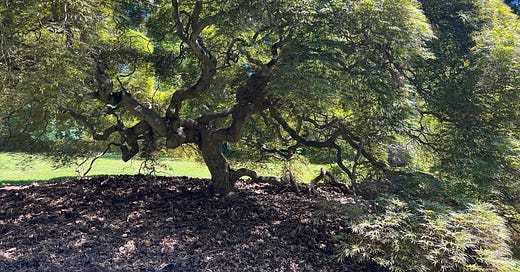



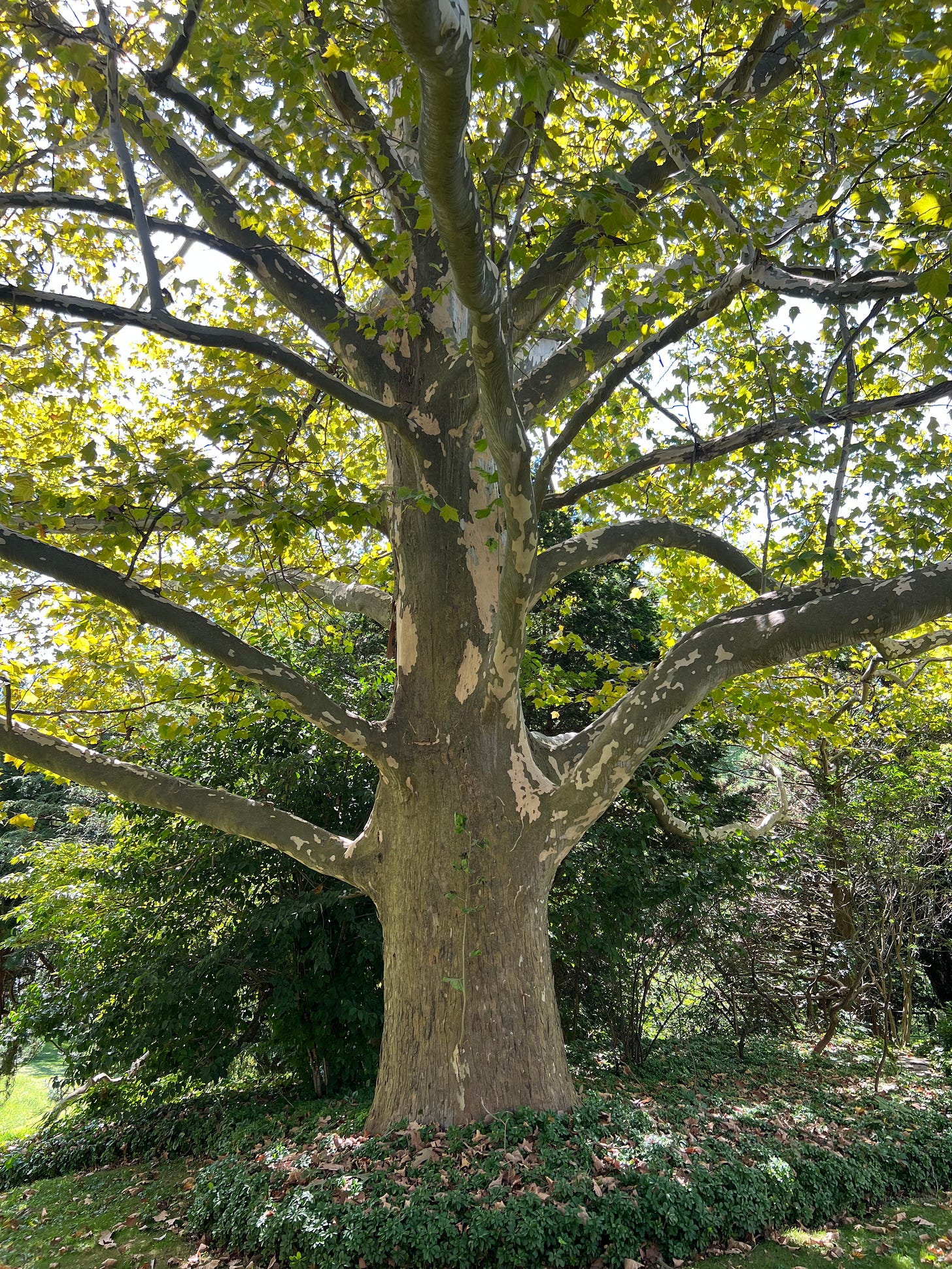
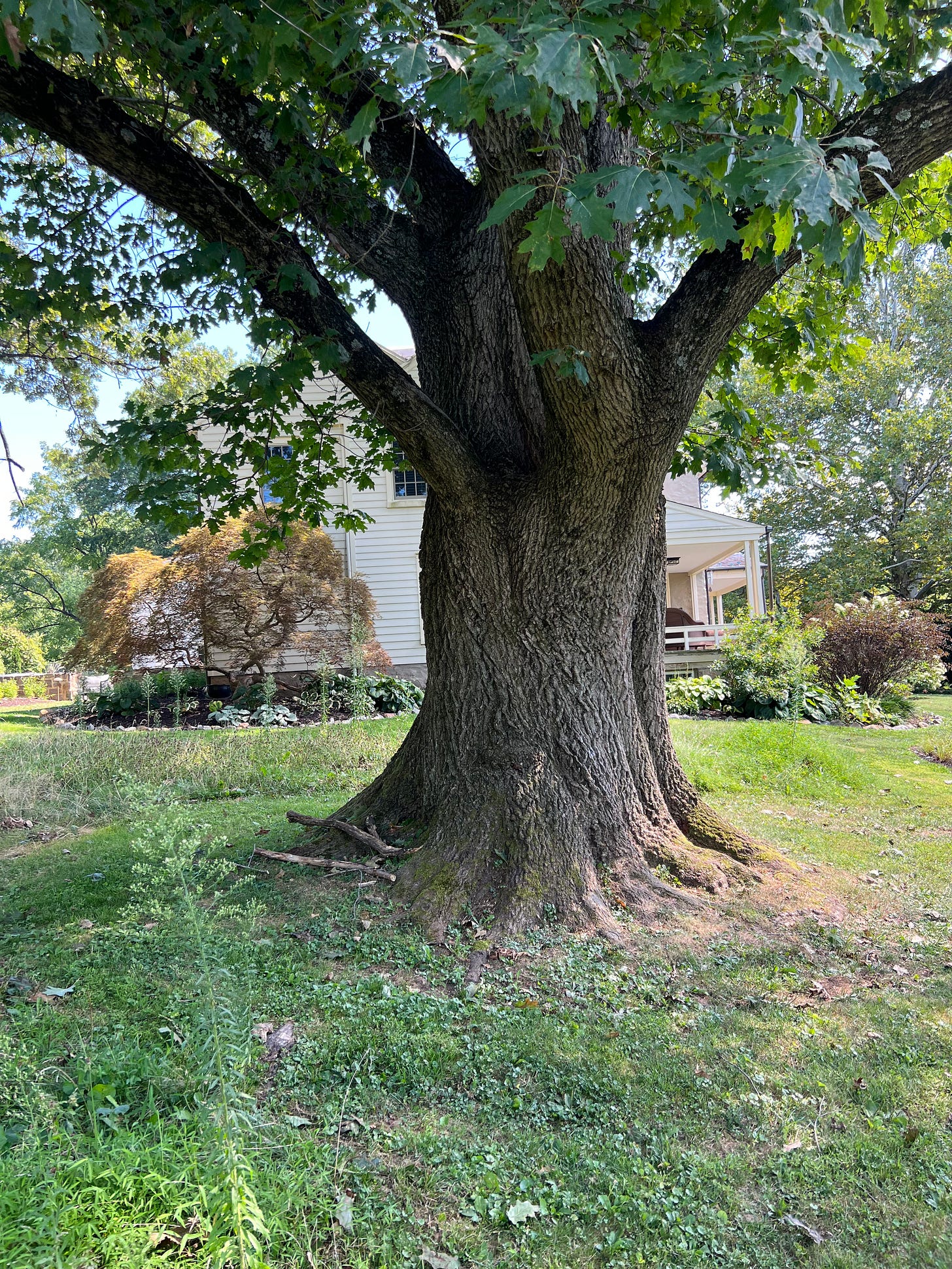


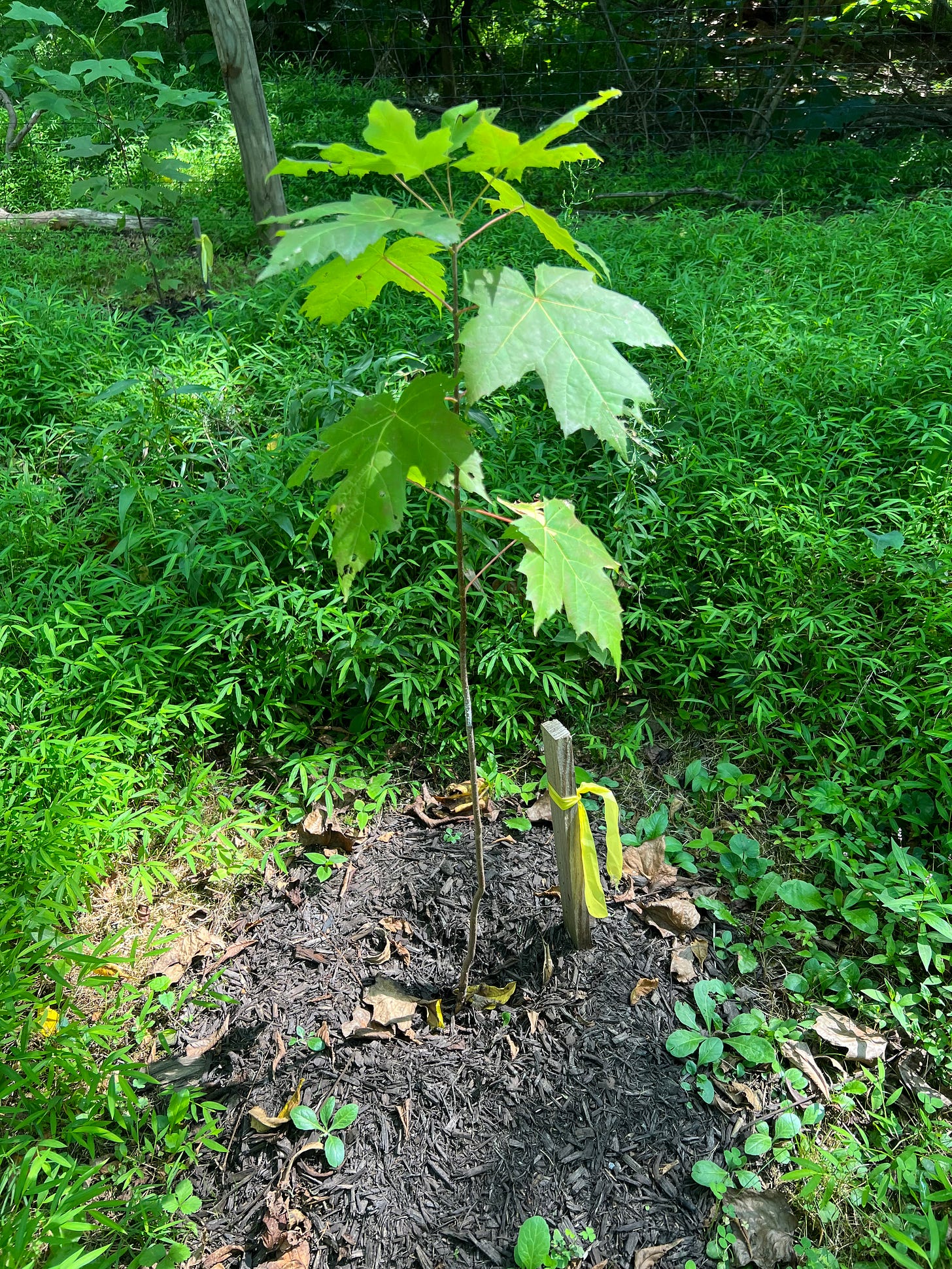
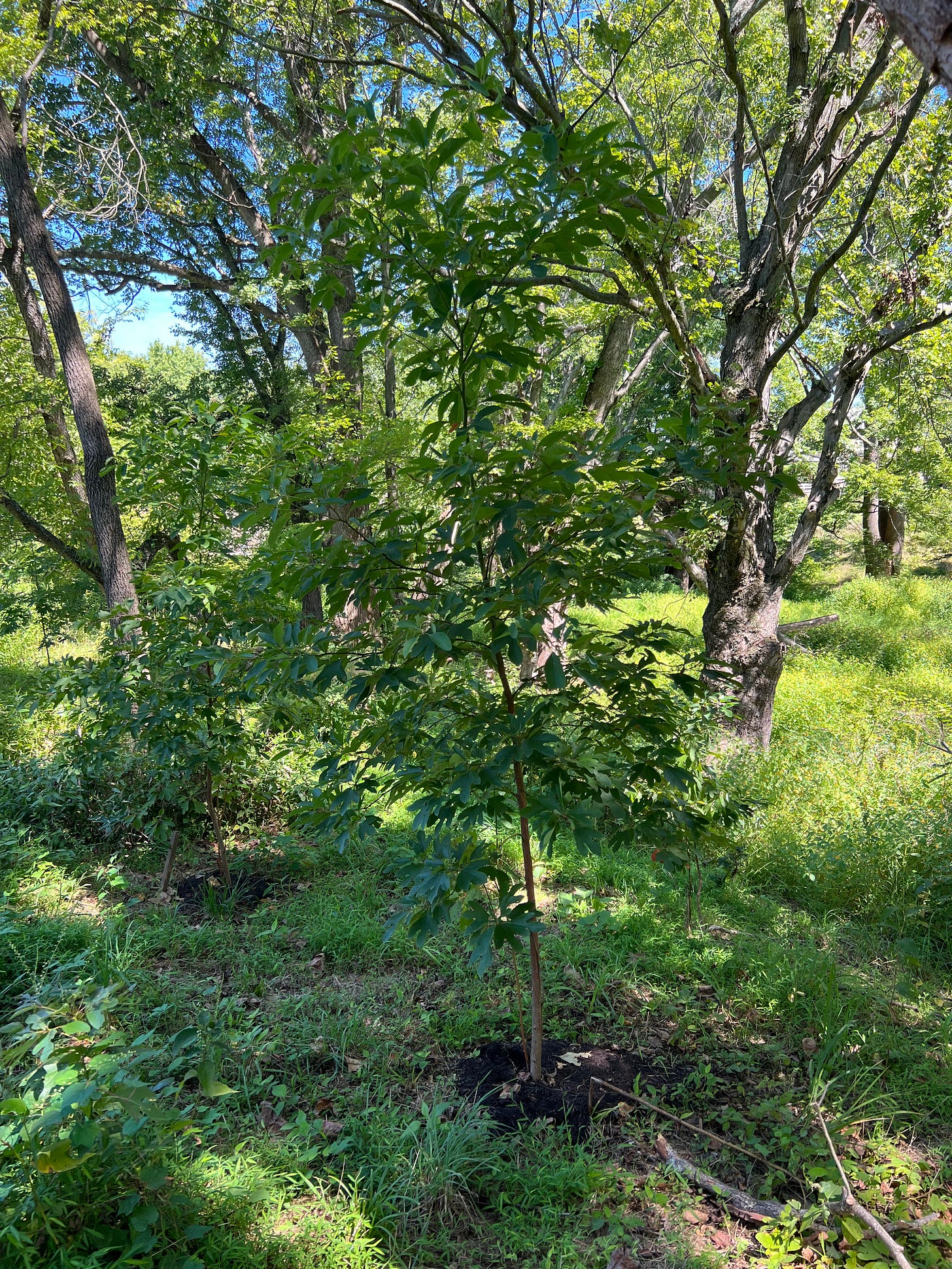
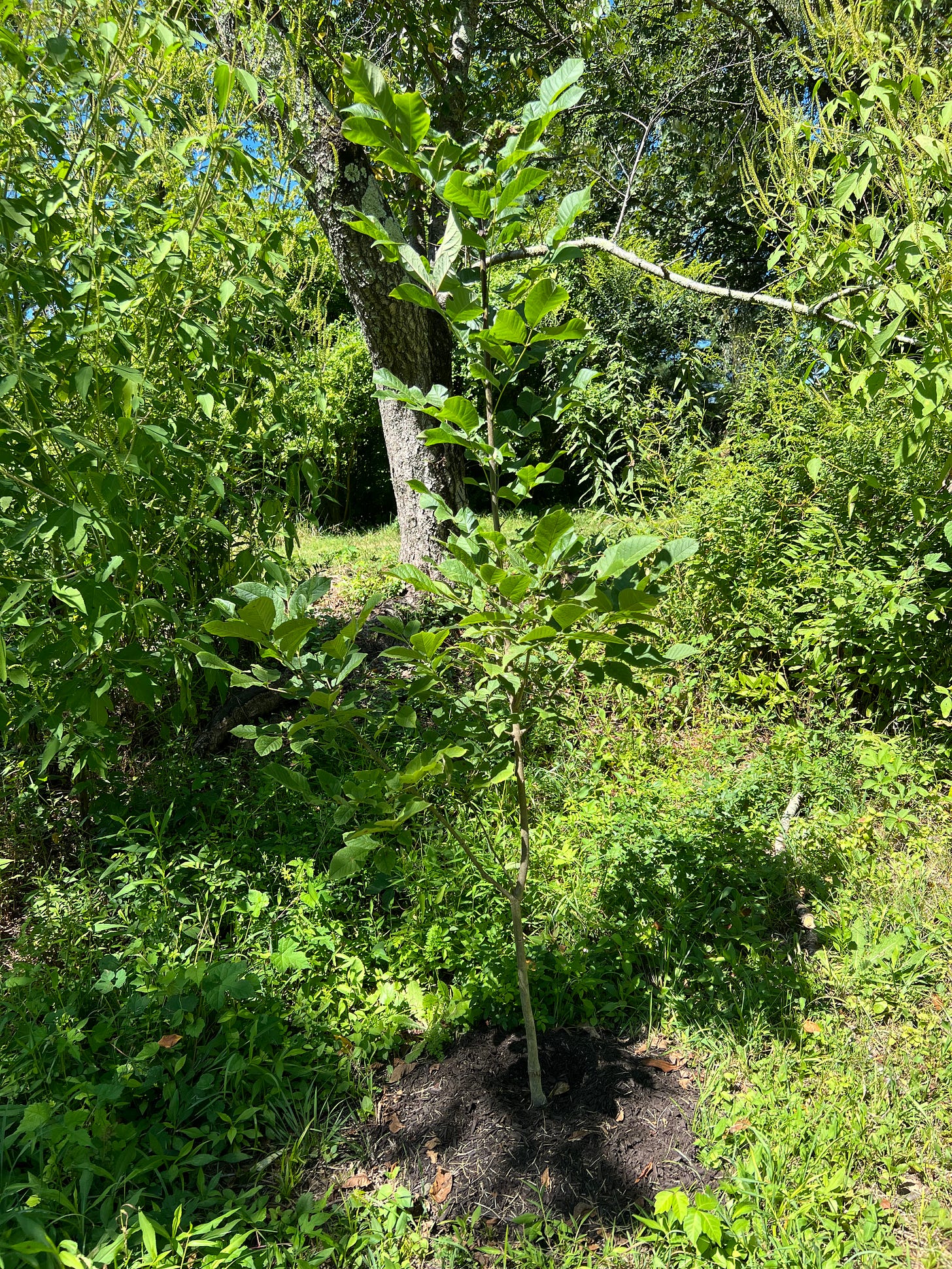
If could start over I would shop for trees and not the house! Thanks for all your commentary.